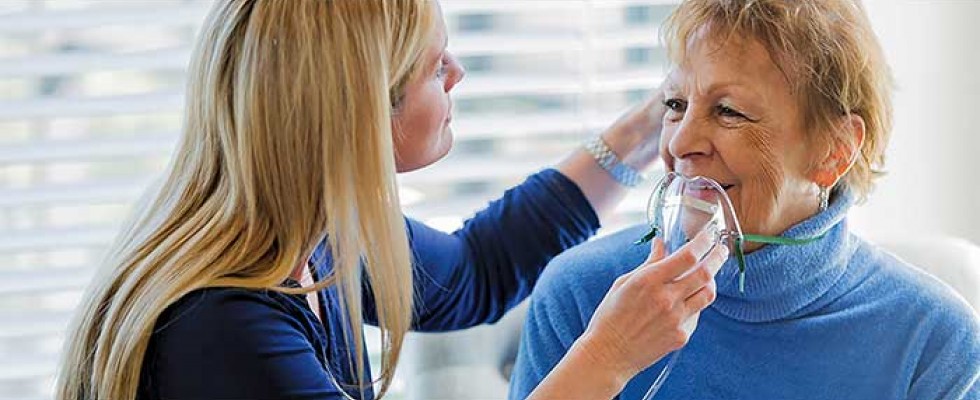
The new paradigm of value-based care is already changing how care is delivered. By improving teamwork and coordination across multiple health care settings, and by shifting the focus to value and quality as opposed to quantity, positive outcomes result in better care for individuals and populations and lower costs for both providers and patients.
Accountability and evidence-based medical reporting are now the keys to timely reimbursements. The Patient-Centered Medical Home accreditation, designed primarily for physician and clinic offices, helps providers document the level of care they provide to their patients. It requires 24/7 access to care, scheduled follow-up visits, a medication management process and increased documentation.
A similar type of value-based care is also now available to home medical equipment (HME) providers who offer advanced respiratory services. This accreditation program is called the Patient-Centered Respiratory Home. (Note: The program and title is exclusive to The Compliance Team.)
Shifting the Focus of Care
It is no longer good enough to focus solely on stabilizing patients enough to go home from the hospital. Value-based respiratory patient care must focus on trying to prevent the patient from returning to the hospital or going to the emergency room for a high-priced, avoidable visit. This approach requires care coordination and a team-based approach to better educate patients and families.
One solution is for integrated care teams to extend services to the home, working with patients and their families to de-escalate problems and offer services that focus on self-managing their condition and proper utilization of the emergency room.
The Patient-Centered Respiratory Home (PCRH) allows the respiratory provider to better engage chronic care patients to focus on adherence. Better outcomes are driven via additional respiratory care planning and focused follow-up visits with their respiratory practitioner.
A Solution for HME
Smaller HME businesses can take a critical look at the services they’re offering, how they’re offering them and to whom. After analysis, they can decide whether PCRH is the right path for their business. PCRH is built around the same basic principles as the Patient-Centered Medical Home:
- Comprehensive respiratory care management
- Patient-centered focus
- Coordinated care with prescribers
- Increased access to services
- Quality and safety
This model utilizes the power of integration, bridging the gap between the respiratory care practitioner and prescriber and crafting beneficial outcomes for high-risk patients. One of the most important elements to PCRH can be summed up as “follow up, follow up—and then follow up again.”
PCRH is inherently a value-based strategy. Since the Centers for Medicare & Medicaid Services restructured its reimbursement incentive program in an effort to move toward value-based care, contacting payers with patient outcome results may actually net an increase in reimbursement.
Details of the PCRH Model
The most important aspect of PCRH is that the respiratory practitioner offers advanced access to patients. Appointments for counseling and education in respiratory care management sessions are made available to patients with complex care issues. This communication with the respiratory specialist is available via telephone, walk-in contact and the provider’s website.
A patient assessment is performed for patients in need of complex management of their respiratory needs and the HME provider creates a respiratory care plan—including a process for improving adherence, monitoring protocols and educating the patient and caregiver.
In addition, the respiratory specialist or respiratory care coordinator implements care coordination activities with specified high-risk patients.
The HME provider takes steps to reduce unnecessary utilization of services by performing after-visit calls the following day. The respiratory care coordinator monitors emergency department visits and hospital admissions to identify high-risk patients. HME products are delivered to the hospital pre-discharge and counseled home visits are provided. The HME may also use telehealth to ensure ongoing compliance.
Frequent follow-up and care coordination among the care team are essential for a good patient outcome.
Boosting Business
The first step in improving and increasing your respiratory business is by providing excellent care to your current patient population. Be sure to demonstrate how your additional services are directly related to decreased utilization of the emergency department and better outcomes for those patients. Through trust and agreement with your referral sources, you can attain an increase in referrals from your prescribers through better monitoring and management of their complex patients in need of a respiratory home.
Secondly, provide proof to your referral sources and other members of the circle of care (e.g., the discharge planner or case manager) that the quality of your advanced services has been validated by a third-party national accreditation organization. Finally, document and measure your results with data that shows how increased monitoring has kept emergency department visits down, and thus saved money. This is powerful when presenting to prescribers and payers.
Providing True Value
Value-based care benefits providers, payers and patients. The Compliance Team has built all of its accreditation programs on what matters most to the patient. For a respiratory patient, that may be something as simple as walking up a flight of stairs without relying on a rescue inhaler or being more mobile with oxygen.
The PCRH helps identify what matters most to the patient and how to accommodate his or her needs and goals. The program offers providers a blueprint for improving lives—while increasing opportunities for businesses to demonstrate value-based care to payers.
